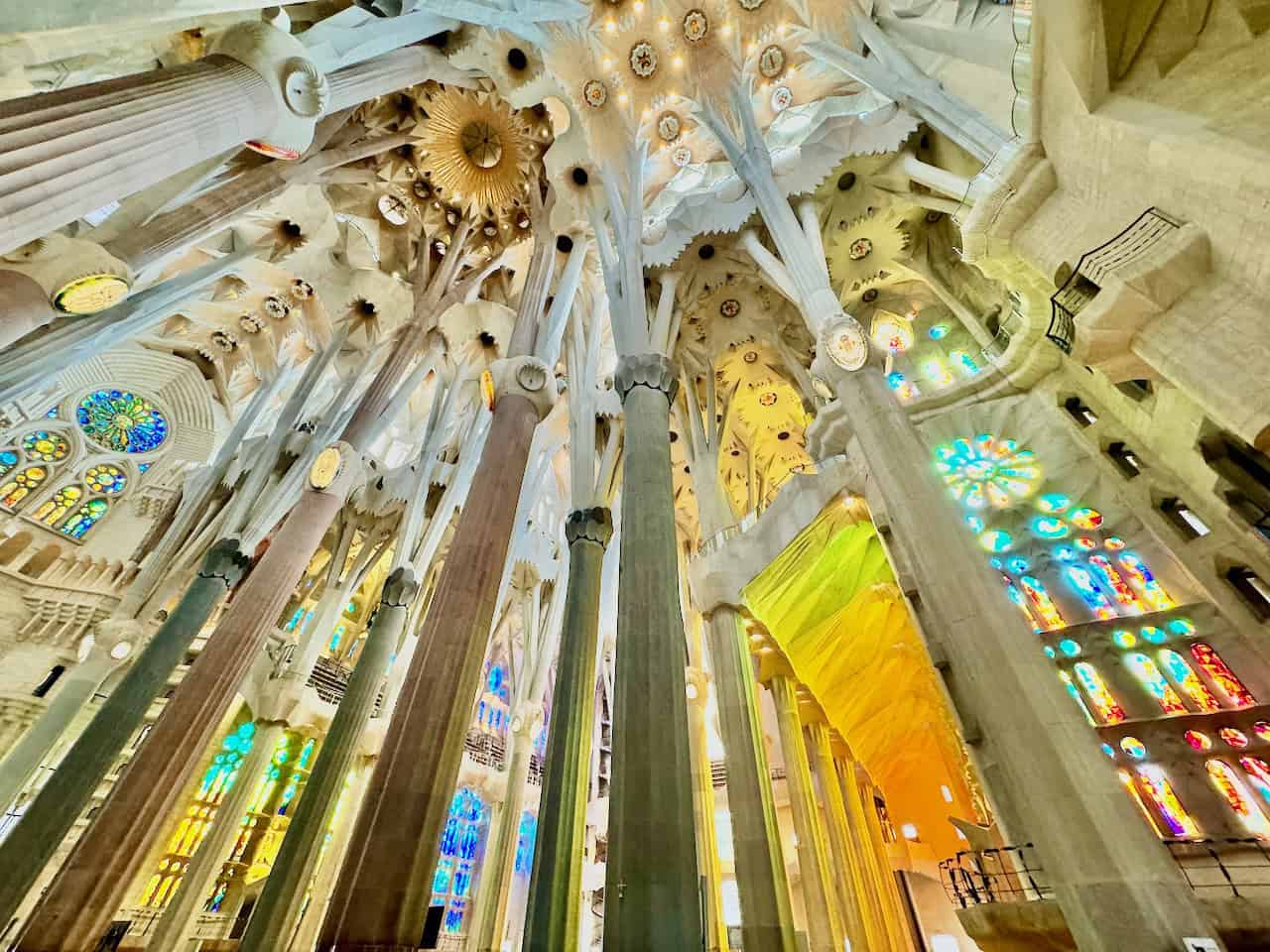
The Basilica de la Sagrada Familia in Barcelona, Spain, is one of the most extraordinary buildings in the world, known for its unique architectural style and construction process that’s taken more than a century. This basilica, designed by the visionary Catalan architect Antoni Gaudí, is a UNESCO World Heritage Site and remains a symbol of Barcelona, drawing millions of visitors annually.
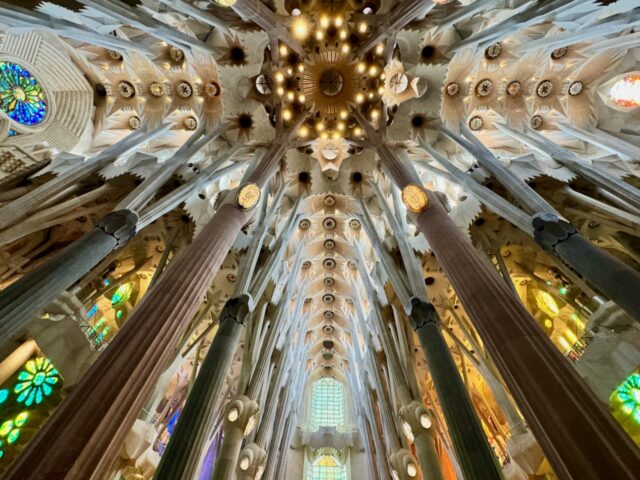 The awe-inspiring interior of the Sagrada Familia
The awe-inspiring interior of the Sagrada Familia

I’ve visited this amazing basilica three times so far, in a period spanning almost 30 years. My first visit to the Sagrada Família was in 1995 when much of the basilica was still pretty much a construction site. The Nativity and Passion façades were an imposing sight but the interior had a long way to go. At that time, there wasn’t even a roof!
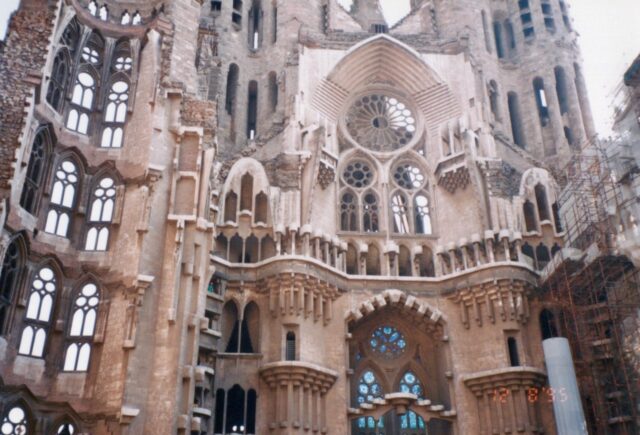 The Sagrada Familia interior in 1995
The Sagrada Familia interior in 1995 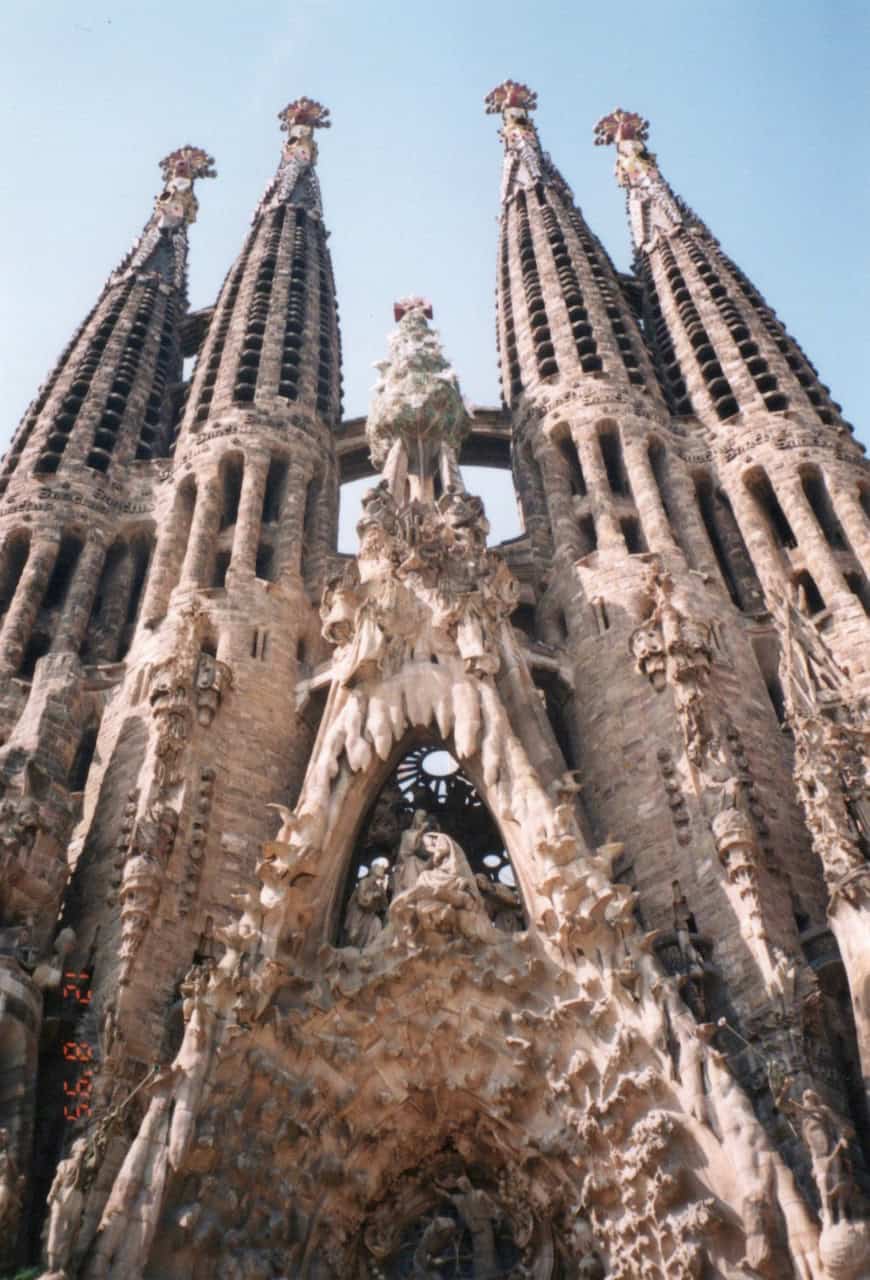 The Nativity Facade in 1995
The Nativity Facade in 1995
During my latest visit (2024), I was struck by awe and a wave of emotions as I stepped inside the basilica. What greeted me was something I never could have imagined and it left me speechless and wonderstruck. No words could describe what I was looking at.
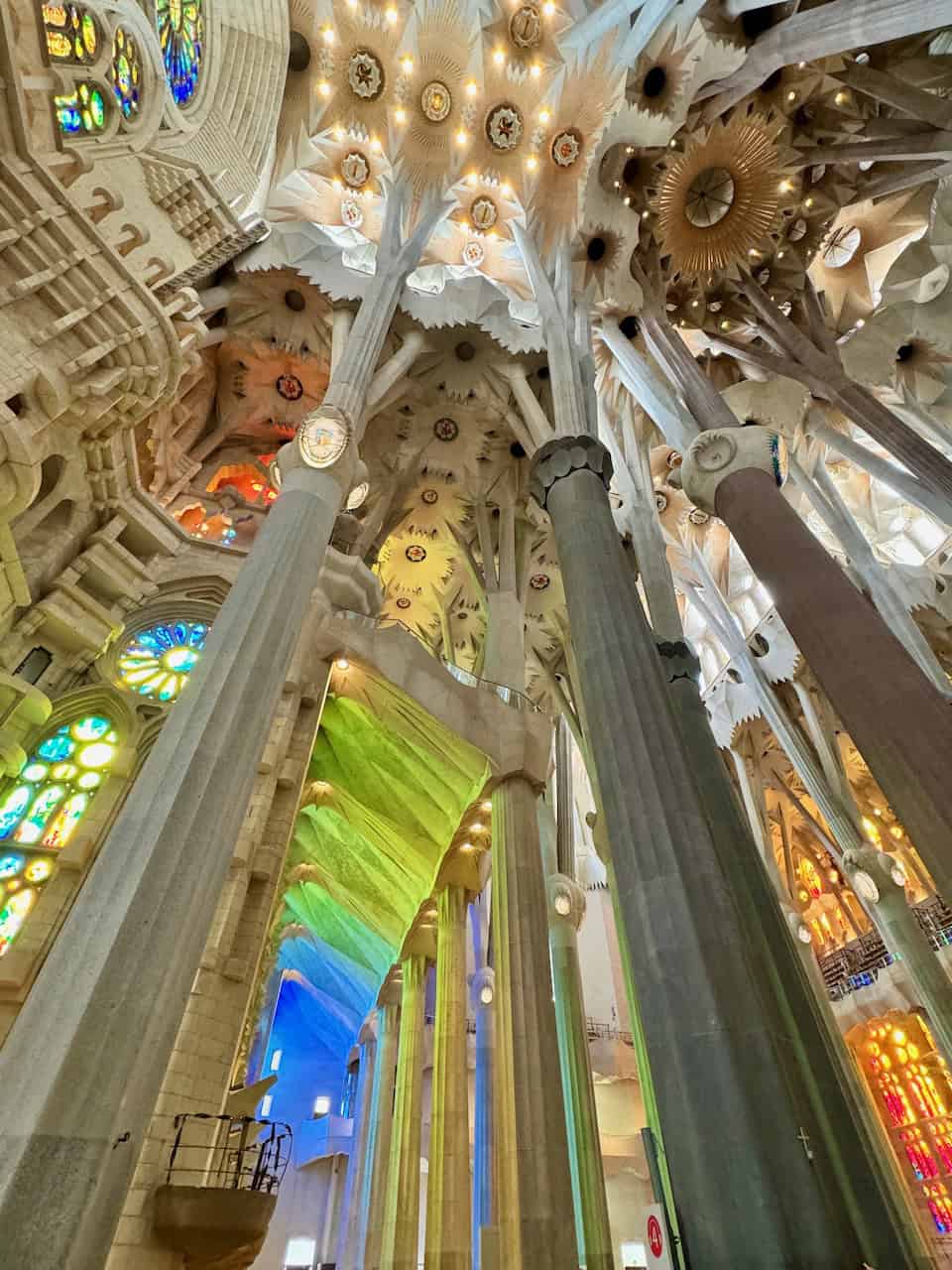 This view left me speechless!
This view left me speechless!
The history of Sagrada Família
The origins of the Sagrada Família in Barcelona date back to the late 19th century. In 1882, construction began on a modest church designed by architect Francisco de Paula del Villar. However, Villar resigned the following year, and the project was handed over to Antoni Gaudí.
Under Gaudí’s direction, the design of the Sagrada Família underwent a dramatic transformation. He combined Gothic and Art Nouveau styles with his unique vision, creating a structure that was both traditional and avant-garde. Gaudí devoted the last 15 years of his life exclusively to the basilica, and when he died in 1926 after being struck by a tram, less than a quarter of the project was complete.
The construction of the Sagrada Família continued after Gaudí’s death, but progress was slow due to the complexity of his designs, lack of funding, and the Spanish Civil War. During the war, parts of Gaudí’s original plans and models were destroyed, but his apprentices and later architects have continued to work towards his vision, interpreting his remaining notes and drawings.
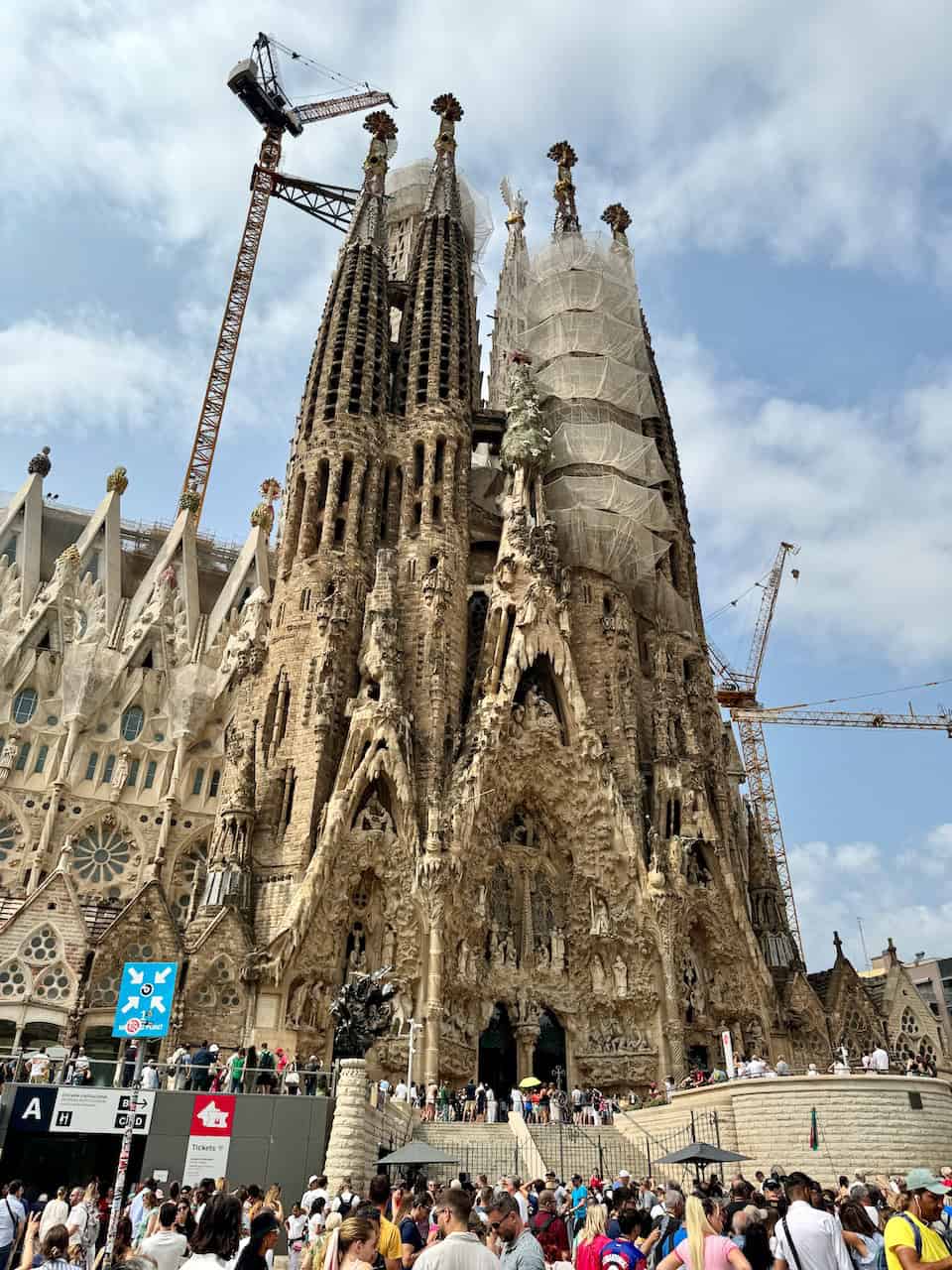 Construction continues despite the crowds. Left of the towers, you can easily see the newer (lighter coloured) sections next to the older (darker) sections.
Construction continues despite the crowds. Left of the towers, you can easily see the newer (lighter coloured) sections next to the older (darker) sections.
Today, construction is still ongoing, funded primarily through donations and entrance fees from visitors. The basilica was consecrated by Pope Benedict XVI in 2010, a significant milestone. The plan is to complete the Sagrada Família by 2026, to coincide with the centenary of Gaudí’s death. However, due to various challenges, such as COVID 19, the completion date will likely be several years later.
I was well aware of how popular basilica is as a tourist attraction so I purchased a skip-the-line ticket with a specific time slot. The guide was waiting just outside the gift shop when I arrived. When the group was complete, we went through the security check and proceeded to the Nativity façade. The guide pointed out the fascinating details of the façade before leading us into the basilica.
The Sagrada Família is renowned for its intricate design, which reflects Gaudí’s genius and his deep connection to nature. As I walked around the central nave, I noticed the resemblance to a forest, with its towering trees and lush canopy.
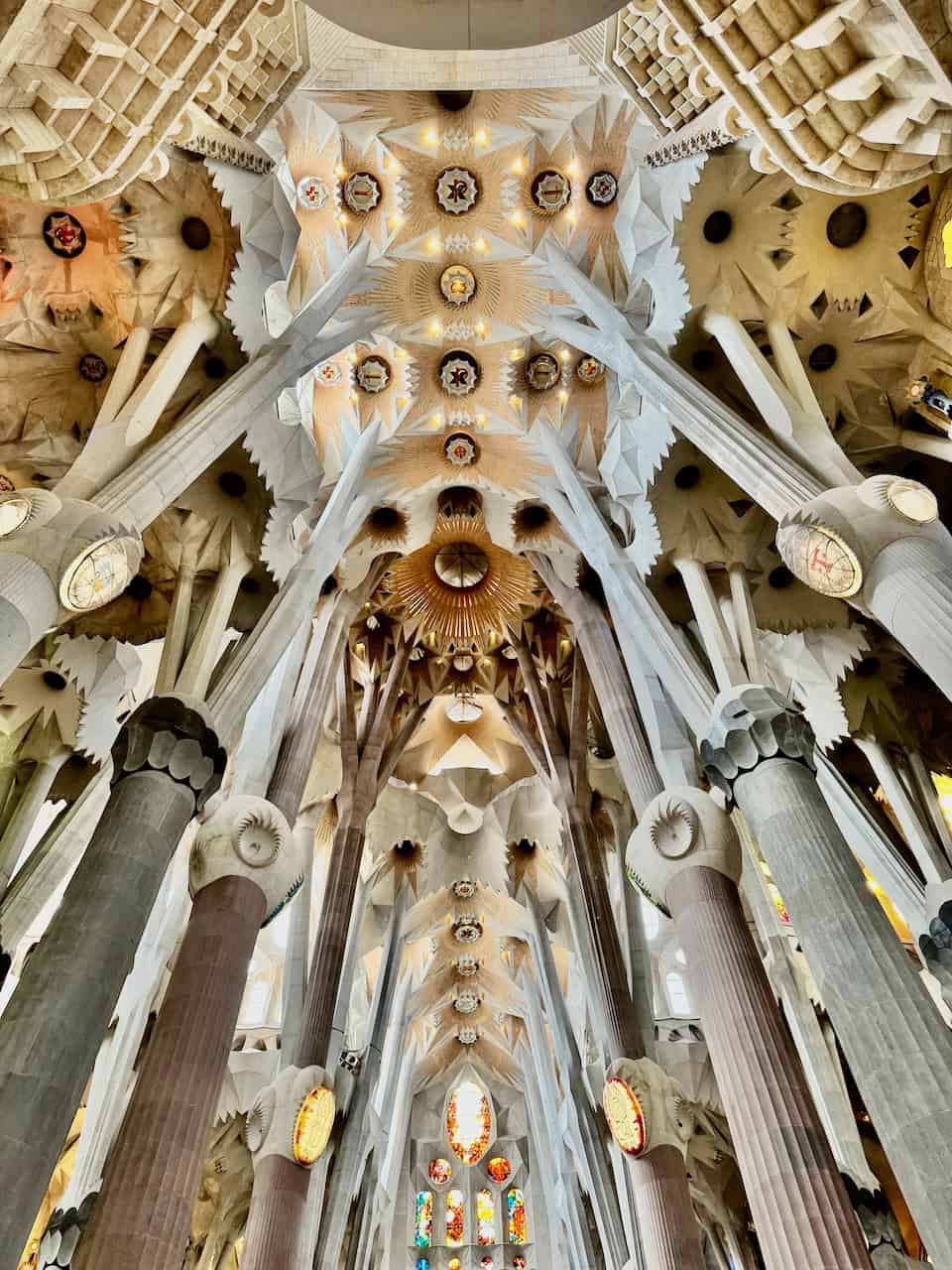 A forest of trees!
A forest of trees!
The basilica is filled with symbolic elements and unique architectural features, making it a masterpiece of art and engineering. During the tour, I learned about the innovative design and construction methods, such as the use of hyperboloids to support the structure and distribute the weight. Here are the main architectural highlights of Sagrada Família to look out for during a visit:
1. The Façades
The basilica has three grand façades, each depicting a different aspect of Christ’s life: the Nativity, the Passion, and the Glory.
Nativity Façade
This east-facing facade, completed under Gaudí’s supervision, is dedicated to the birth of Jesus and represents the joy of life. It’s richly decorated with sculptures of animals, plants, and biblical scenes, reflecting Gaudí’s love for nature. The intricate details of this facade, including the statues of Mary, Joseph, and the infant Jesus, make it one of the most striking aspects of the basilica.
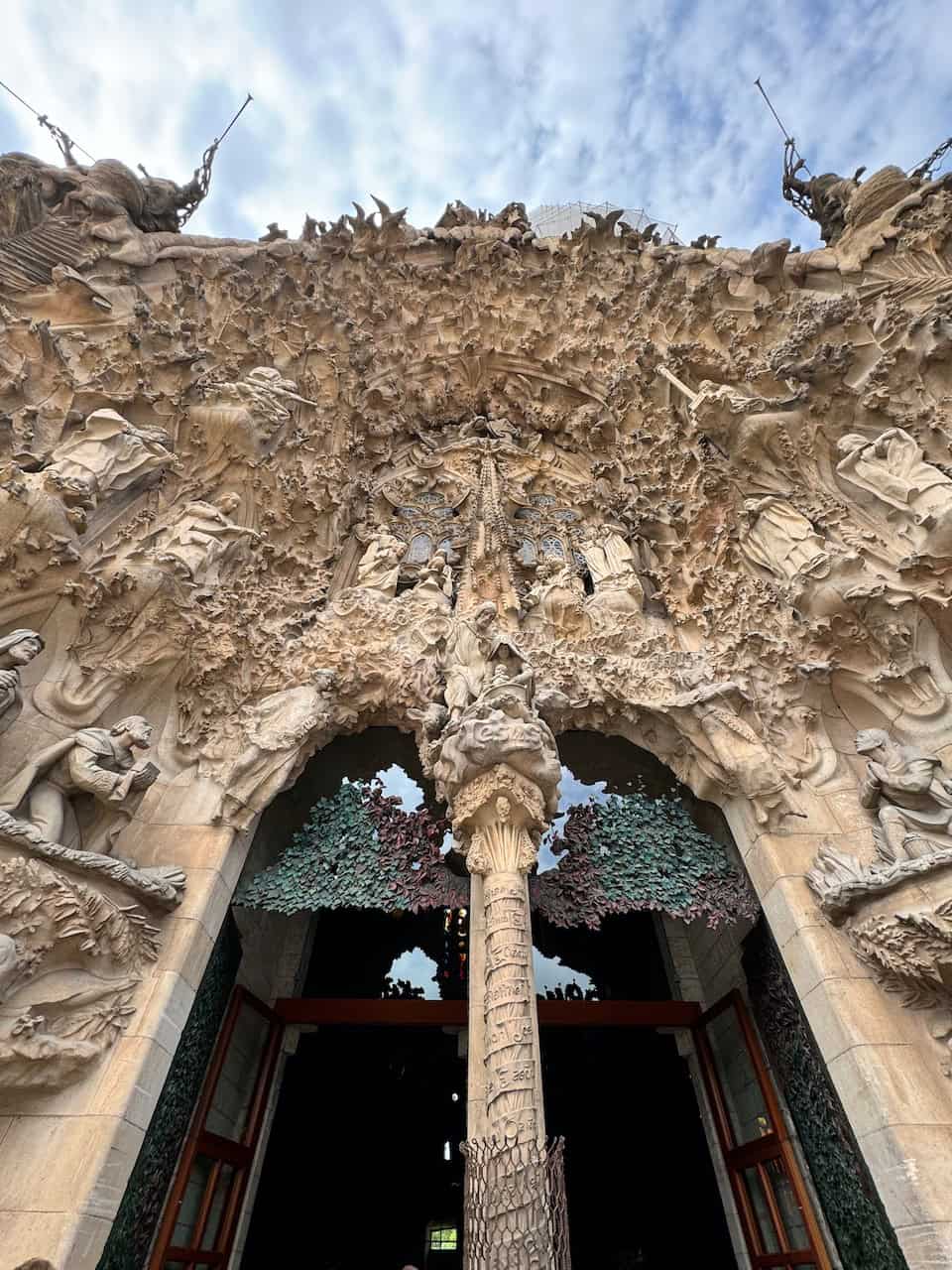 The richly-decorated Nativity façade
The richly-decorated Nativity façade
Passion Façade
In stark contrast to the Nativity Facade, the Passion Facade is austere and somber, symbolising the suffering and death of Christ. The angular, geometric sculptures, designed by artist Josep Maria Subirachs, depict the events leading up to the crucifixion.
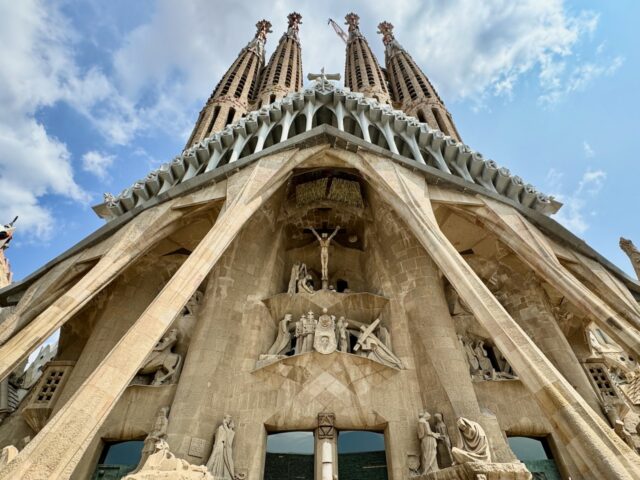 The Passion façade
The Passion façade 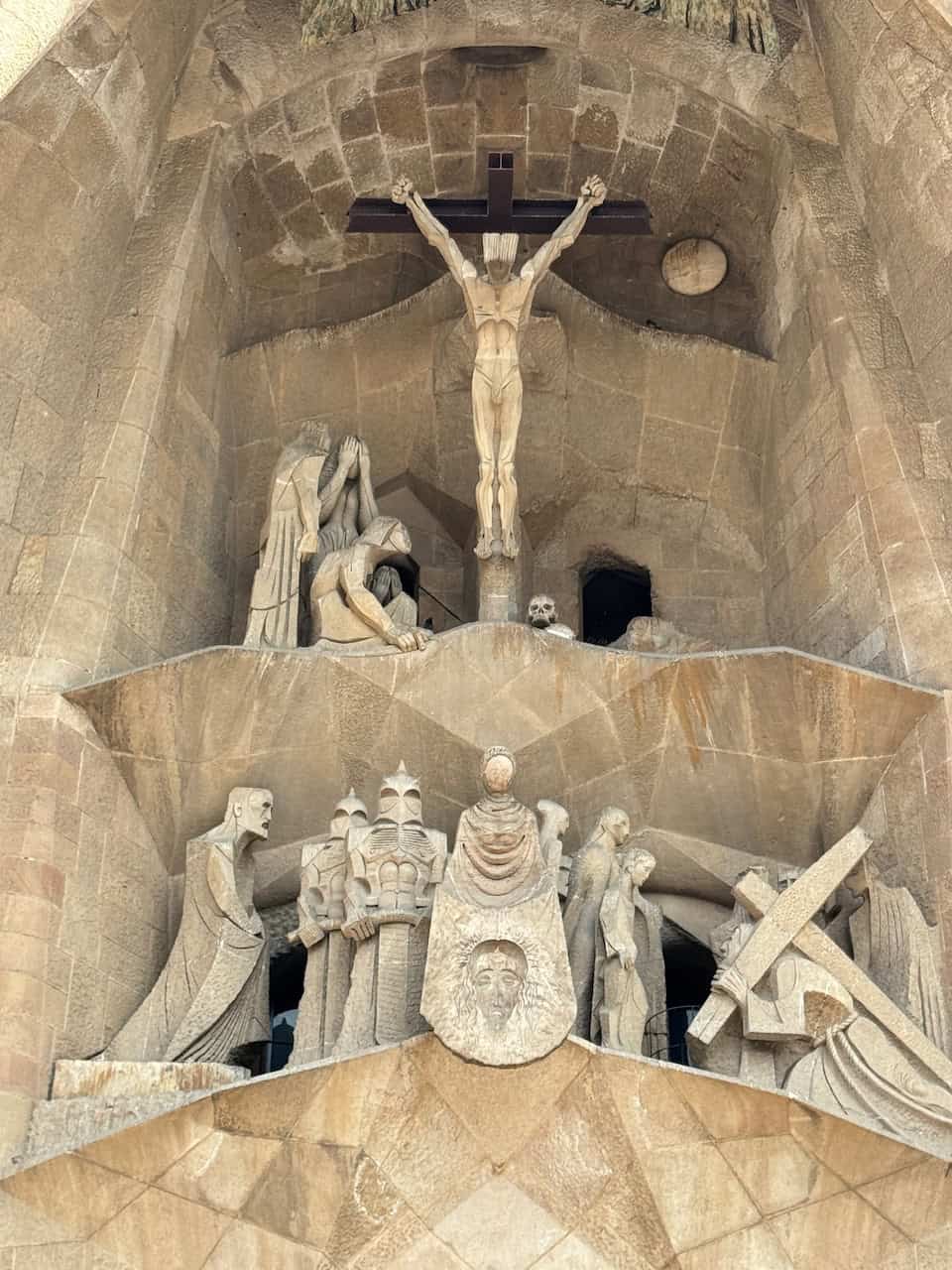 Depiction of the crucifixion on the Passion façade
Depiction of the crucifixion on the Passion façade
Glory Façade
Still under construction, this will be the most monumental of the three facades. It will depict the ascension of Christ and the path to God, representing the final stage of human spiritual elevation. When completed, it will serve as the main entrance to the basilica.
2. The Towers
The Sagrada Família is designed to have 18 towers, each symbolising a different religious figure. These include 12 towers representing the apostles, four for the evangelists, one for the Virgin Mary, and the tallest, standing at 172.5 meters, for Jesus Christ. Each tower is unique in design, featuring intricate stonework and adorned with colourful mosaics. The towers offer panoramic views of Barcelona and the surrounding area.
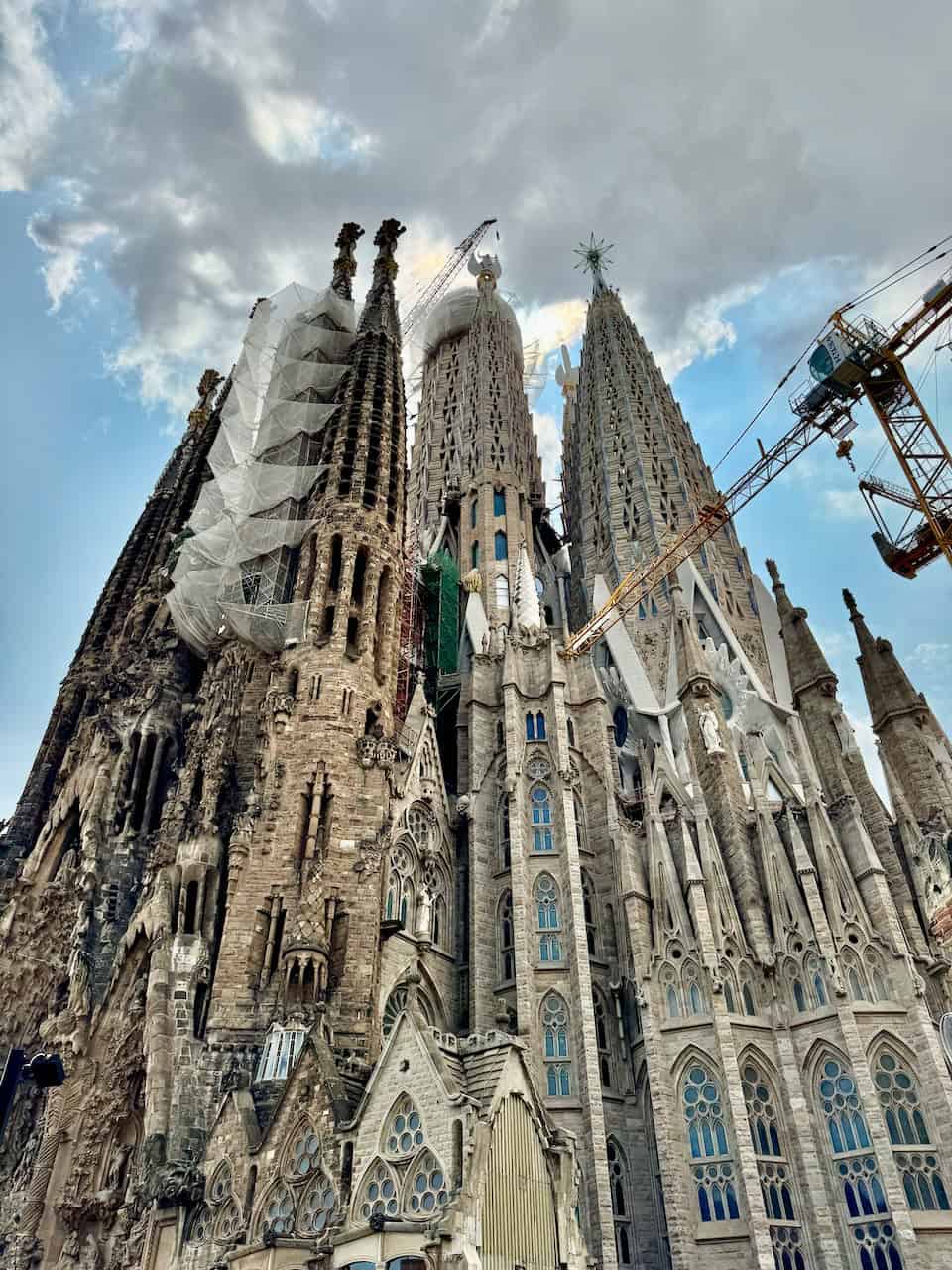 The towers – the Virgin Mary spire is on the right
The towers – the Virgin Mary spire is on the right
3. The Interior
Stepping inside the Sagrada Família is like entering a forest of stone illuminated by colourful light. Gaudí designed the interior columns to resemble tree trunks, branching out at the top to support the ceiling. This creates a natural, organic feel, as if the entire structure is alive.
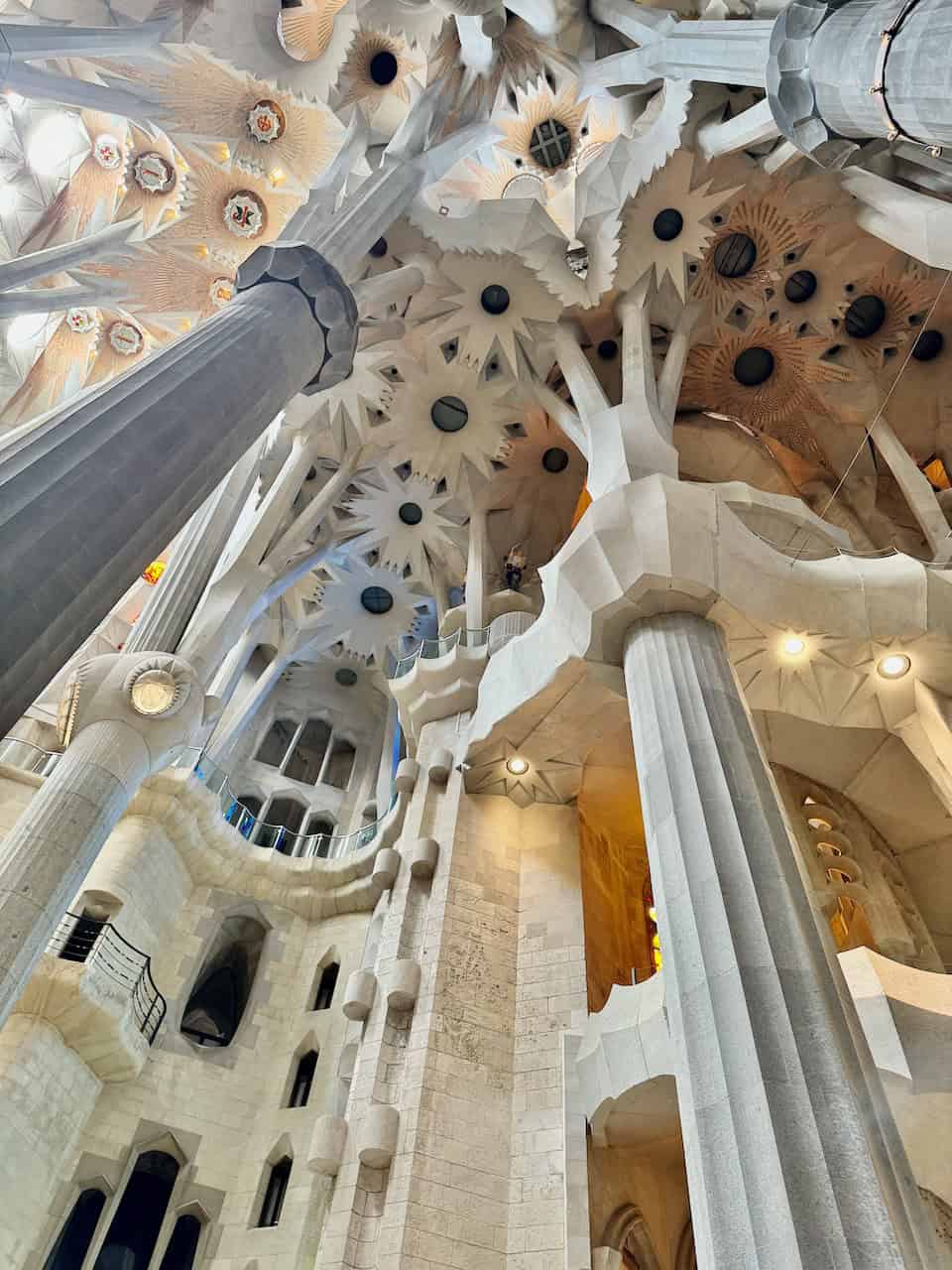 A forest of stone with its tree trunks, branches and canopy.
A forest of stone with its tree trunks, branches and canopy.
The play of light within the basilica is absolutely spectacular. The stained glass windows, completed by contemporary artists following Gaudí’s plans, fill the interior with a kaleidoscope of colours, changing with the time of day.
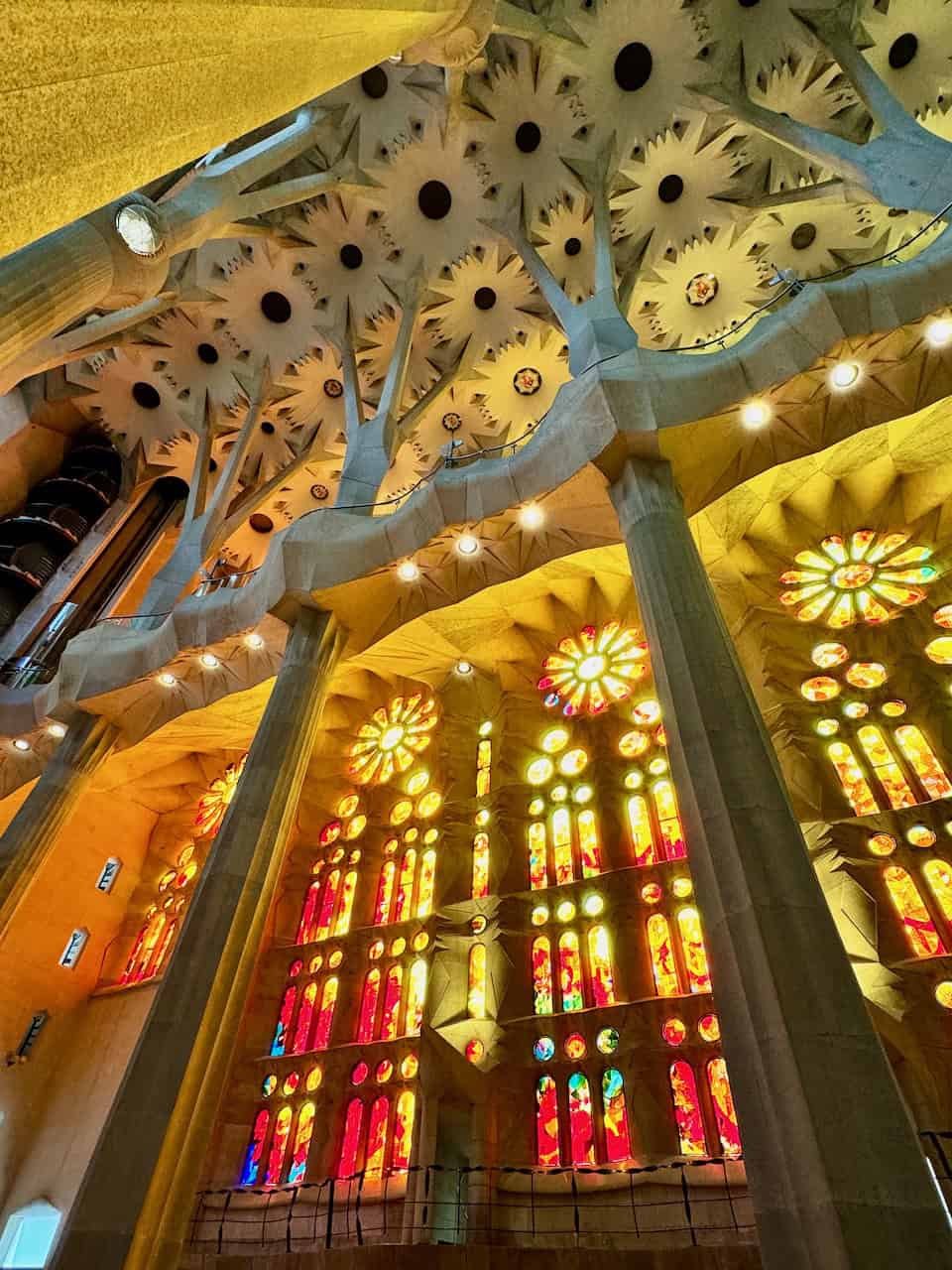 The stained glass windows on the western side
The stained glass windows on the western side 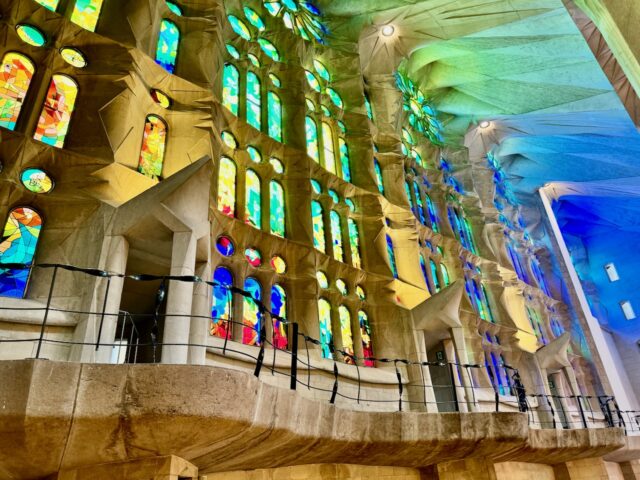 Stained glass windows at the eastern side of the central nave.
Stained glass windows at the eastern side of the central nave.
The interior also features a large, suspended crucifix in the apse, which adds to the spiritual atmosphere.
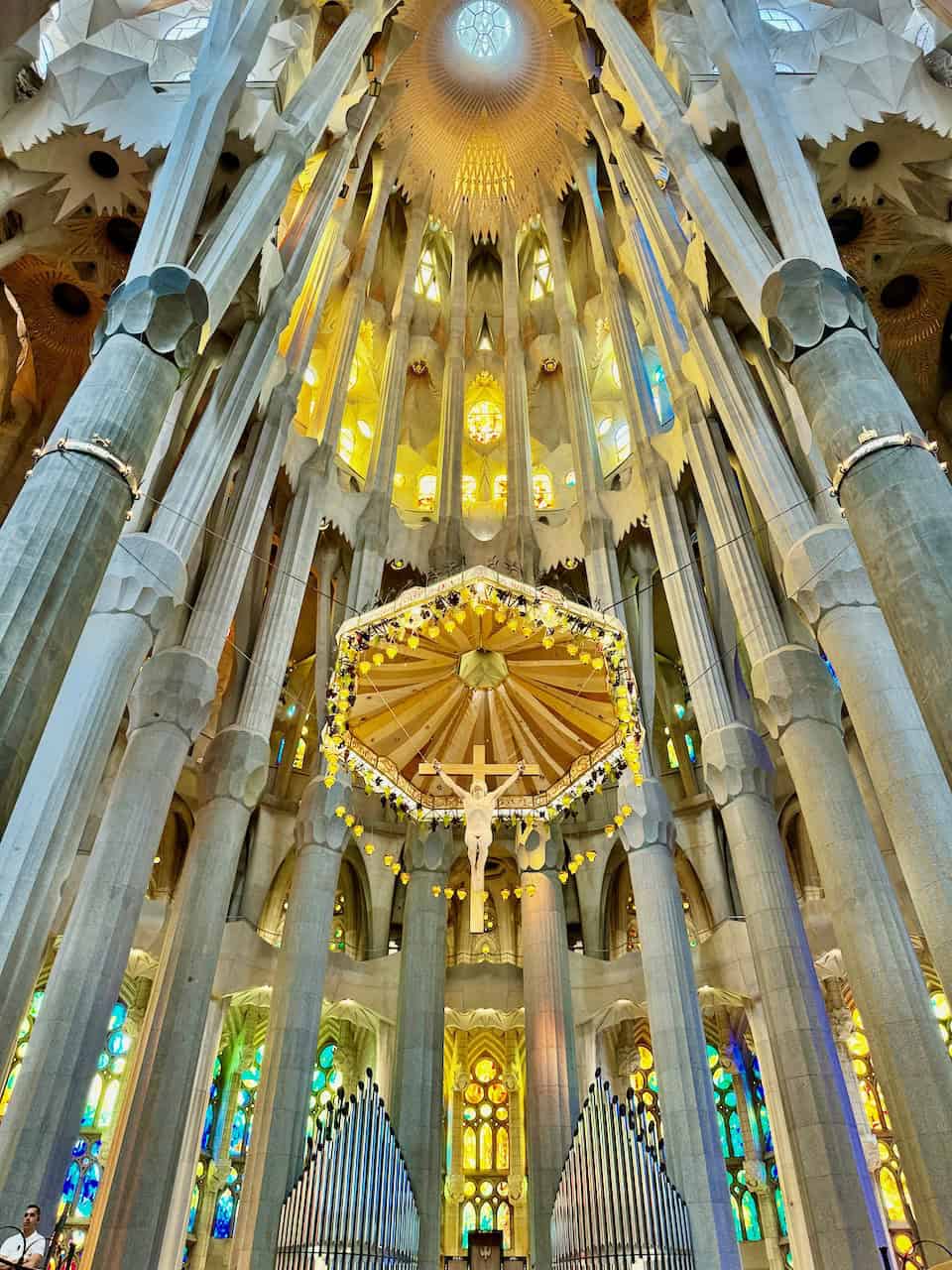 The suspended crucifix
The suspended crucifix 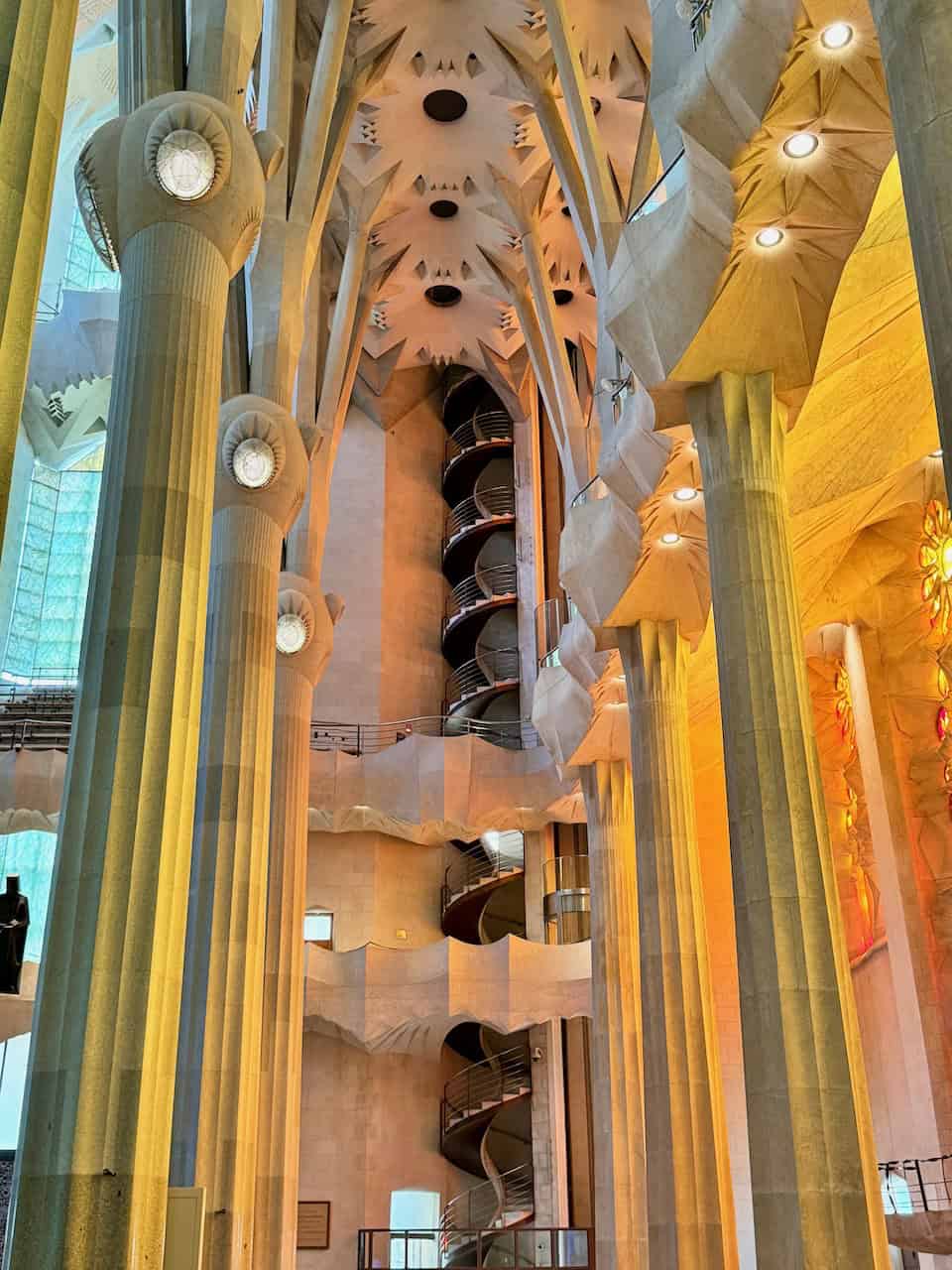 I loved this spiral staircase!
I loved this spiral staircase!
4. The Crypt and Museum
The crypt, where Gaudí himself is buried, is located beneath the apse and was one of the first parts of the basilica to be completed. Above the crypt is a museum dedicated to Gaudí’s life and work. It provides insight into his design process, including his use of models and innovative techniques. The museum also displays some of Gaudí’s original drawings and models, offering a deeper understanding of his vision for the Sagrada Família.
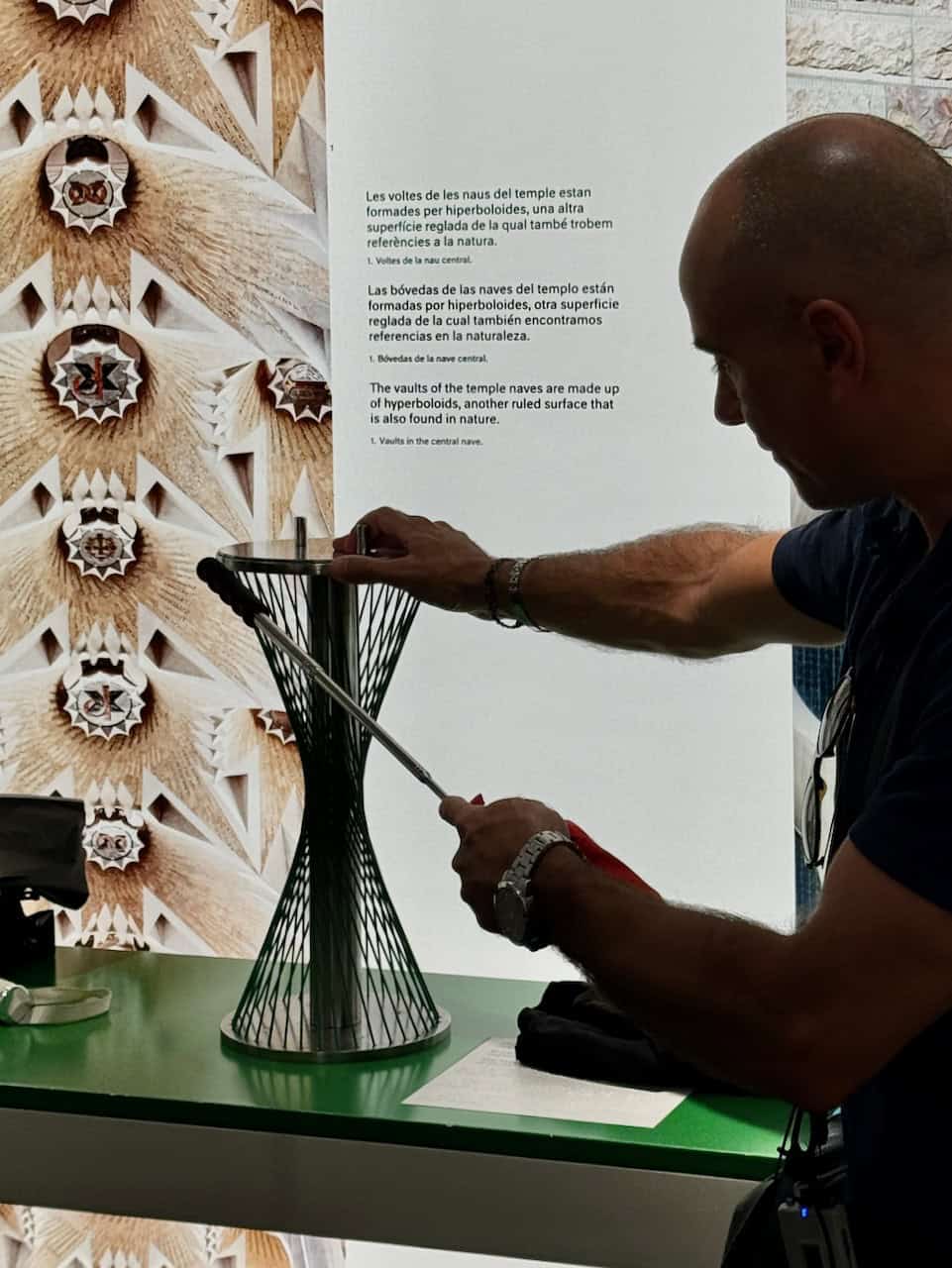 Our guide explaining the use of hyperboloids in the construction of the basilica
Our guide explaining the use of hyperboloids in the construction of the basilica
What to do when visiting the Sagrada Familia
There are several things to do in the Sagrada Familia to enhance the experience of your visit:
Climb the towers
For those who don’t mind heights, climbing the towers is a must. The view from the top is spectacular, offering a panoramic perspective of Barcelona. Each tower is different, and the experience of ascending them adds to the appreciation of Gaudí’s architectural prowess.
Study the detailed sculptures
Spend time observing the facades and the detailed sculptures. Each scene is packed with symbolic elements that tell a deeper story about the Christian faith. The Nativity and Passion façades, in particular, are filled with details that are easy to miss if you’re not looking closely.
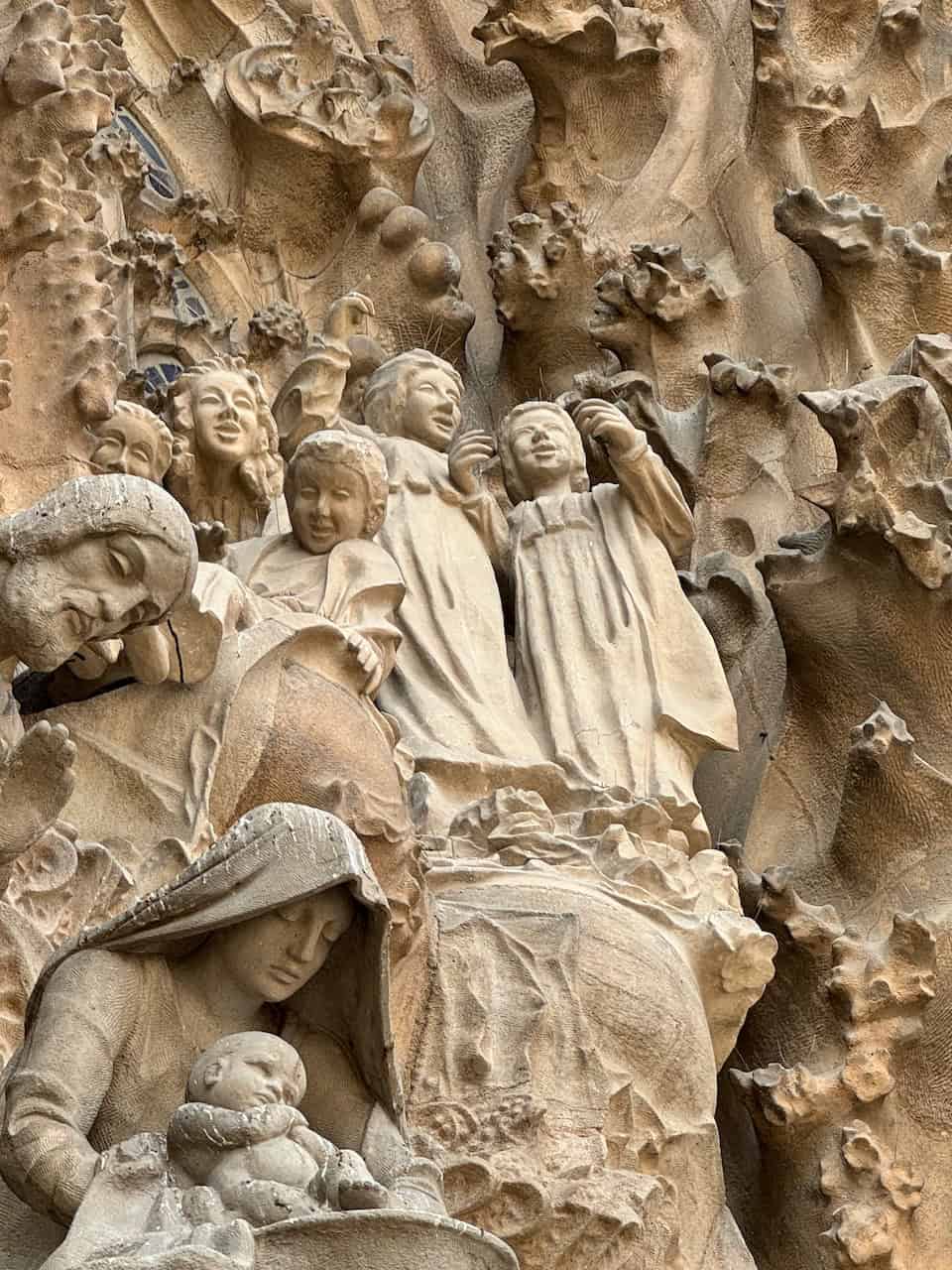 Learn why the angels in the Nativity facade have Asian features
Learn why the angels in the Nativity facade have Asian features 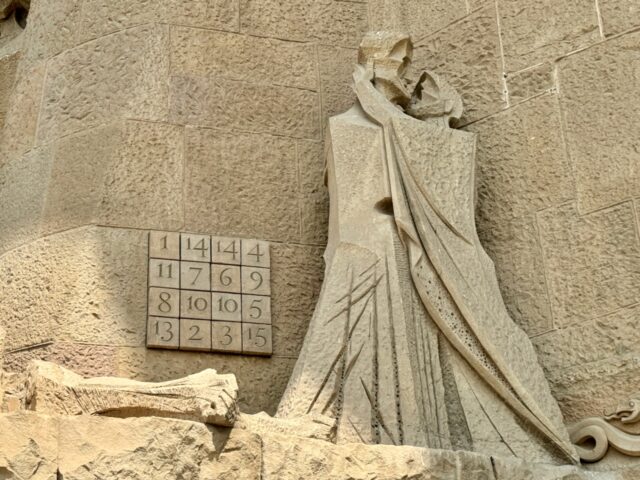 What does that cryptogram on the Passion facade symbolise?
What does that cryptogram on the Passion facade symbolise?
Marvel at the light
Inside the basilica, pay attention to how the light changes throughout the day. The stained glass windows are particularly stunning in the morning or late afternoon when the sun casts different hues across the stone columns and floors.
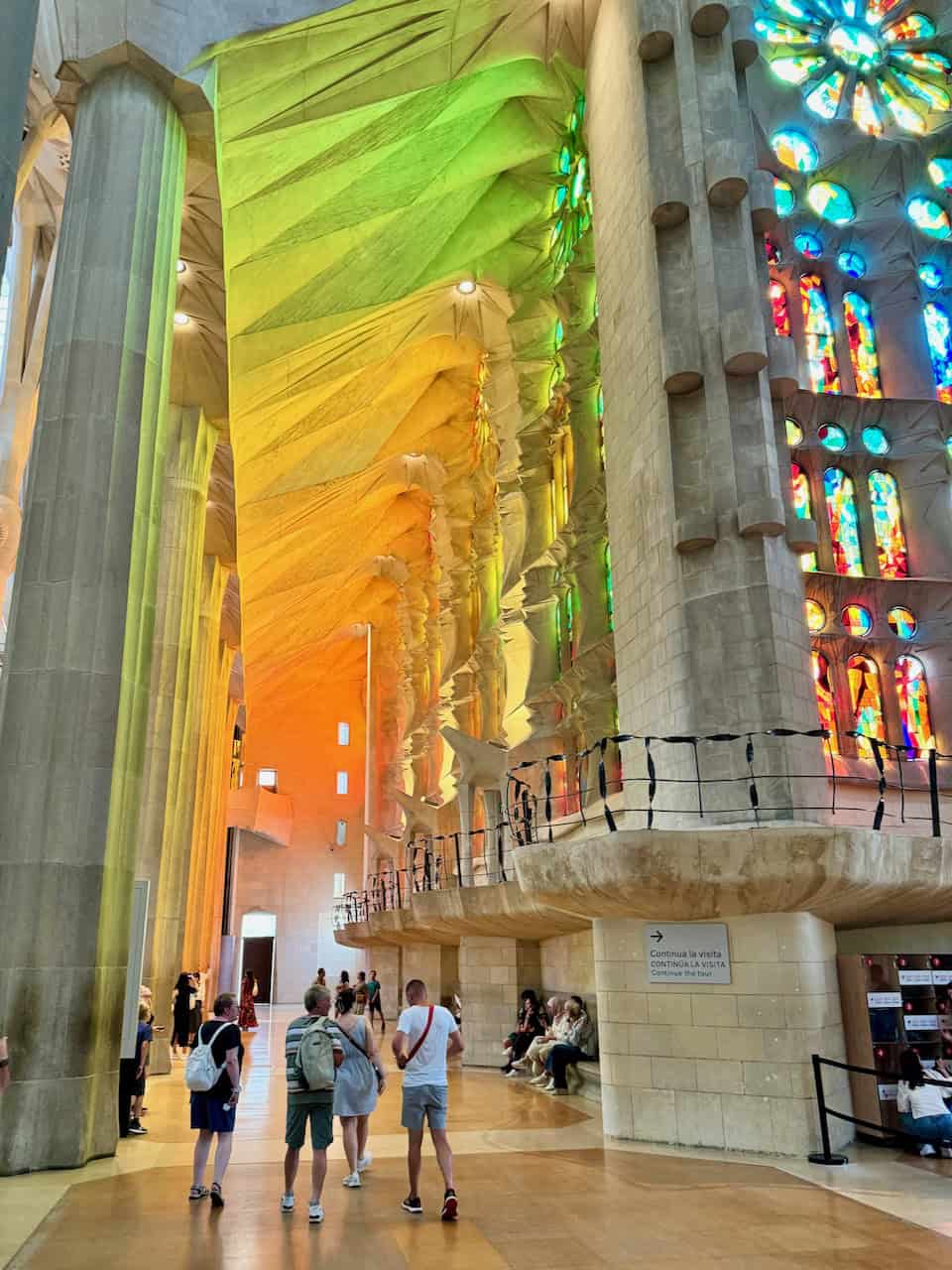 The rainbow of light on the western side of the central nave
The rainbow of light on the western side of the central nave
Visit the workshop
Don’t miss the chance to visit the reconstructed workshop of Gaudí, where you can see some of his original tools and methods. This area of the museum offers a hands-on understanding of how Gaudí’s designs were translated into the basilica’s structure.
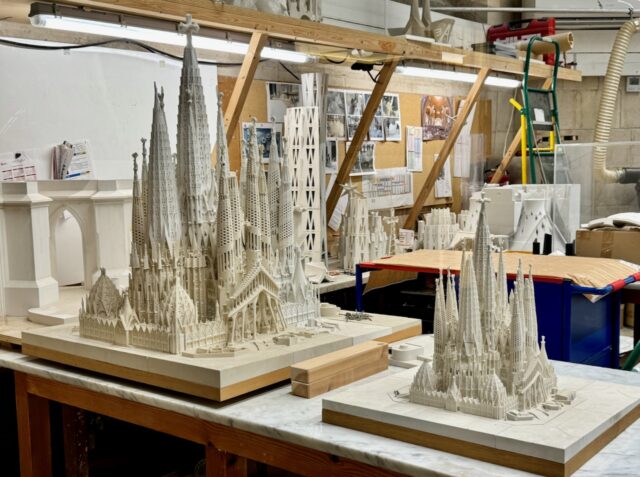 The workshop
The workshop
Enjoy a moment of silence and wonder
In the front of the central nave are numerous rows of pews. This area is for those who want to sit in silence or engage in prayer. I took a seat near the apse and simply took in the ethereal beauty of the basilica. During these few moments, I quietly enjoyed the wondrous sight of the towering columns, kaleidoscope of light and the countless details.
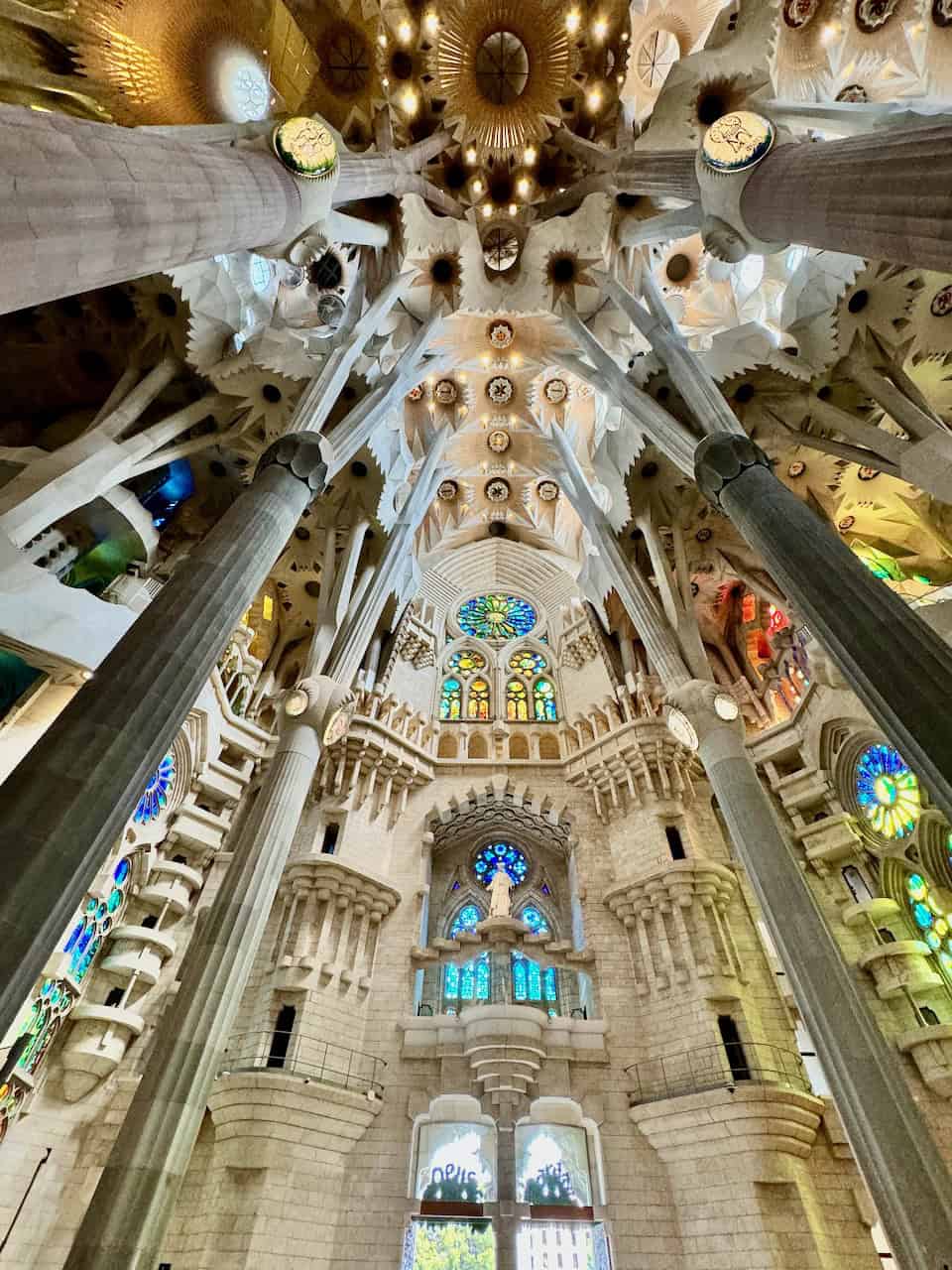 Breathtaking isn’t it?
Breathtaking isn’t it?
Booking.com
Best times to visit Sagrada Familia
The Sagrada Família is one of the most popular attractions in Barcelona, and it can get very crowded. To have a more peaceful experience, I suggest a visit early in the morning, around 9:00 AM when it opens, or later in the afternoon, around 5:00 PM. The light inside the basilica on both sides of the central nave is absolutely magical during these times.
Avoid visiting during major holidays and weekends if possible, as these are the busiest times. Purchasing skip-the-line tickets in advance is highly recommended to avoid long queues, and guided tours can offer additional insights into the basilica’s history and architecture. Keep in mind that the basilica is still under construction so some sections may be closed.
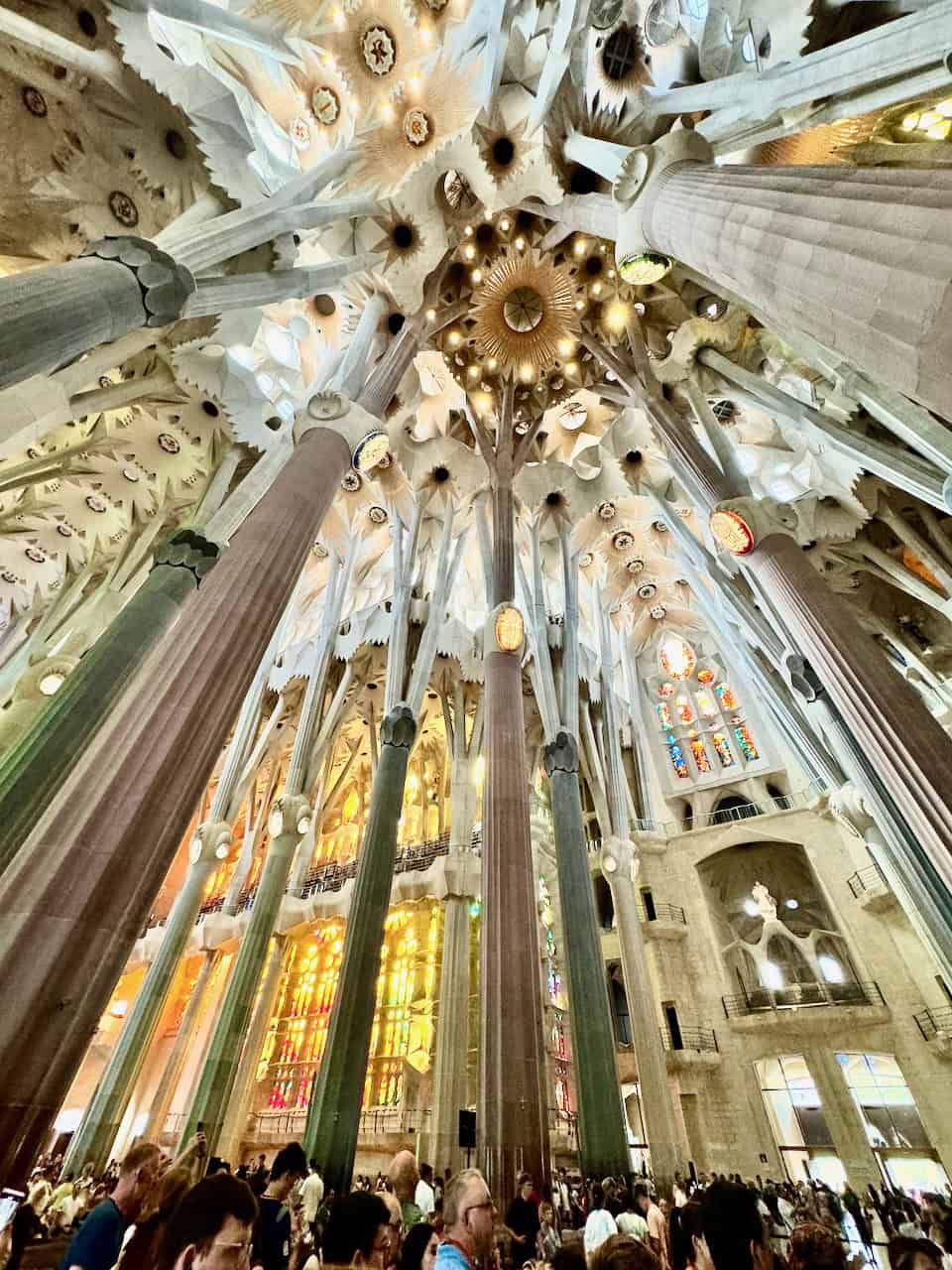 It’s a popular attraction!
It’s a popular attraction!
The Sagrada Familia is more than just a church; it is a living work of art that continues to evolve. Its history, architectural innovation and awe-inspiring appearance make it one of the top things to do in Barcelona. Don’t be put off by the crowds. Plan ahead, purchase skip-the-line tickets and enjoy this magnificent basilica! I can’t wait to visit Sagrada Familia again when it’s fully completed.
Read more about destinations in Spain on Velvet Escape:
Please visit our sponsor:
Our Sponsor
